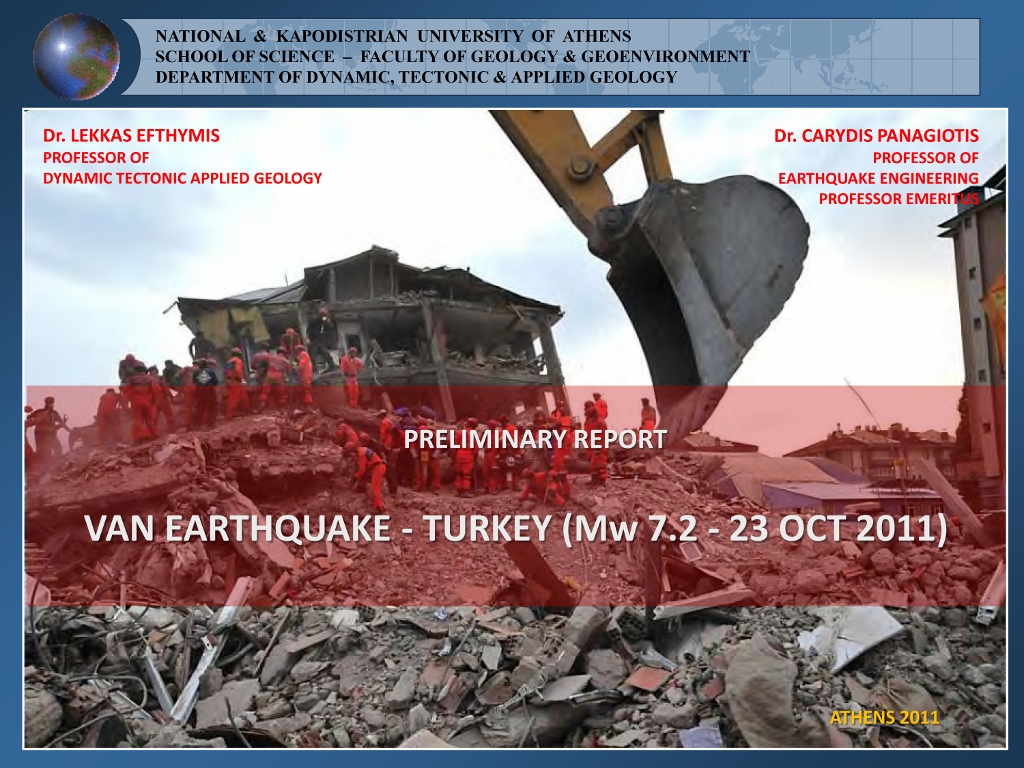This beautiful, isolated rock stands in the Alkyonides Gulf, the northwestern part of the Gulf of Corinth. It has some beautiful notches, which indicate recent uplift. It is situated right on the footwall of an active fault, which was activated during the 1981 earthquake sequence. It is not so easy to use those notches as sea level indicators or for measuring tectonic movements if both effects have to be taken into account. The fault has a huge throw and a beautiful scarp (limestone) with lots of slickensides. One of my favourite places in Greece. Well, the entire Perachora peninsula is worth a visit – an earthquake geologist’s Disney Land!
Posts in the category » « ( 47 Posts )
-
Sunday Geology Picture: Alkyonides Gulf, Greece
2011-12-18 | in Teaching, Uncategorized -
What’s up? The Friday links (26)
2011-12-16 | in The Friday LinksToday is the 200th anniversary of the first event of the New Madrid Earthquake Series. There’s still an open debate on magnitudes, intensities, causative faults, recurrence intervalls and the implication for seismic hazard. Several websites and blogs have nice posts, among them:
-
AGU2011 Tohoku earthquake session on video
2011-12-12 | in TeachingA small comfort for all those who have missed the AGU2011 fall meeting (and so did I) might be that some sessions are now available on video for free. The AGU session on demand page has lots of videos, among them four sessions on the 2011 Tohoku earthquake and tsunami. So if you’re ready for ~8 hrs of earthquake talks, you should definitely have a look.
more
-
What’s up? The Friday links (25)
2011-12-09 | in The Friday LinksIt seems like everyone is at the AGU currently, and even the German media is full of geoscience news. The first really interesting thing that I came across was that hurricanes might trigger strong earthquakes. If Shimon Wdowinski from University of Miami is right, this would be a huge step forward for our earthquake understanding. If he should be right.
-
What’s up? The Friday links (24)
2011-12-02 | in The Friday LinksEarthquake prediction is possible! At least for toads (well, for bufo bufo only). And at least in Italy. And at least in 2009. Do you remember that story of toads having left their home (lake) before the L’Aquila earthuake and returning after the aftershock sequence? A new paper on this was published in the International Journal of Environmental Research and Public Health: Grant et al., 2011: Ground Water Chemistry Changes before Major Earthquakes and Possible Effects on Animals. Int. J. Environ. Res. Public Health, 8, 1936-1956; doi:10.3390/ijerph8061936.
-
SSA 2012 Special Session: Earthquakes and Tsunamis at Coastal Archaeological Sites
2011-11-15 | in Uncategorized | 2 responsesDear colleagues,
We would like to bring your attention to a special session at the 2012 Annual Meeting of the Seismological Society of America (17-19 April, 2012, San Diego, California):”Earthquakes and Tsunamis at Coastal Archaeological Sites”.
-
SSA 2012 Special Session: Macroseismic Effects in Recent and Ancient Earthquakes and their Relationship to Ground Motion Parameters
| in UncategorizedDear colleagues,
We would like to bring your attention to a special session at the 2012 Annual Meeting of the Seismological Society of America (17-19 April, 2012, San Diego, California): “Macroseismic Effects in Recent and Ancient Earthquakes and their Relationship to Ground Motion Parameters”. more
-
What’s up? The Friday links (22)
2011-11-11 | in The Friday LinksEmil Wiechert was born 150 years ago (26 December 1861). He not only invented modern Geophysics and Seismology, but he also had the first chair of Geophysics worldwide (1898 in Göttingen, Germany). Wiechert became famous for his seismograph. Now the Deutsche Post released a special stamp showing Wiechert, his seismograph and the original seismogram of the 1906 San Francisco earthquake as registered in Göttingen, Germany!
-
Preliminary results from the Mw7.2 Van earthquake in Eastern Turkey
2011-11-07 | in Earthquake Some preliminary results regarding geological, engineering and social aspects from the Van Mw 7.2 earthquake (23 October 2011) in Eastern Turkey from Prof. Lekkas and Prof. Karydis visit to the site. Have a look at the following link:
Some preliminary results regarding geological, engineering and social aspects from the Van Mw 7.2 earthquake (23 October 2011) in Eastern Turkey from Prof. Lekkas and Prof. Karydis visit to the site. Have a look at the following link:
http://www.elekkas.gr/el/research/missions/turkey-mission.html -
M5.6 earthquake in Oklahoma
2011-11-06 | in EarthquakeA series of earthquakes has hit Oklahoma, with a M5.6 being the strongest one. The main quake was preceeded by a M4.8 and several smaller ones. A number of aftershocks took place, some of them stronger than M3.0. The epicentre was situated close to Prague about 50 km west of Oklahoma City. All quakes occured in very shallow depth (< 10 km). No injuries have been reported so far, but it seems that some minor damage occured. Quakes of this strength can be felt over hundreds of kilometers in central and eastern US.
